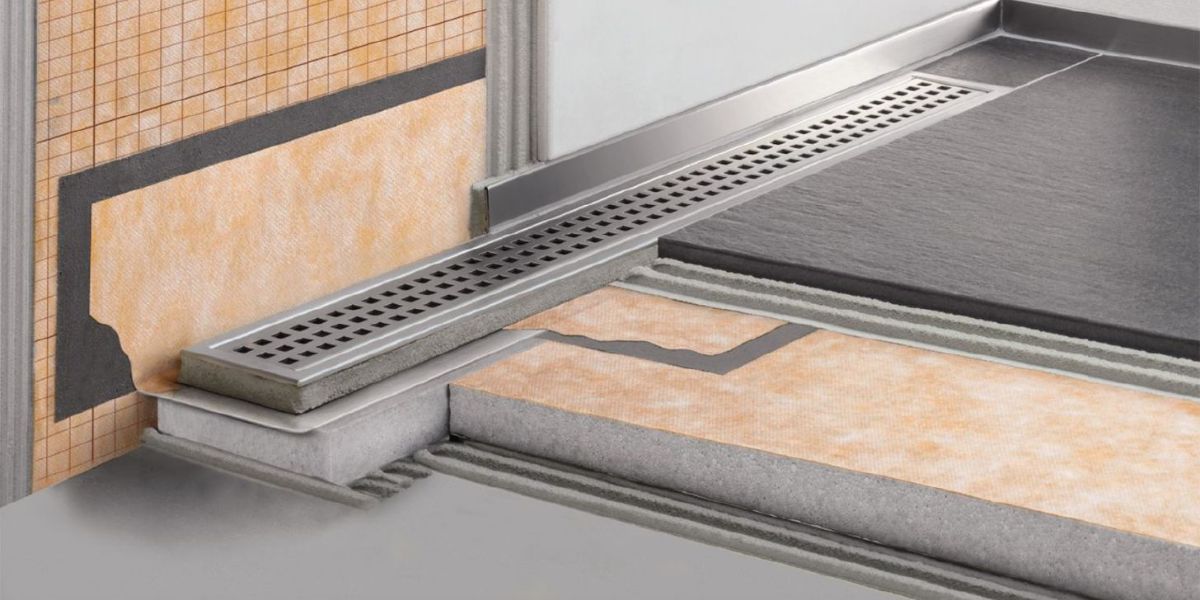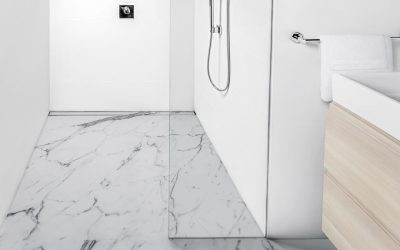Turns out that your shower drain has clogged and needs immediate replacement. Or, you may want to upgrade your old shower. Perhaps you’re completely remodeling your bathroom!
Knowing which shower drain to use can be a major hassle. Unless you have plumbing experience, these things can appear quite complex.
A basic understanding of the types of shower drains can be achieved when you have the right resources. Whether you’re installing a new shower drain, replacing an old one, or building a new shower – this article will guide you in making a perfect choice.
Shower Drain Installation Types
Before delving into the types of shower drains, let us understand their core – the installation types. They are :
Single-Piece Shower Drains
A single-piece drain installation is the simplest and the easiest. They are typically used over a concrete subfloor, as any leakage doesn’t damage concrete. That’s not to say single-piece drains leak, but due to their structure, some mild leakage is a possibility.
Single-piece shower drains consist of a strainer screwed into the recessed area of a pipe socket. The drain pipe fits into the socket and the strainer is attached to the top with screws.
Three-Piece Shower Drains
These drains are typically used to protect a wooden subfloor or any other flooring which would get damaged from water.
The three parts of this type of drain allow for adjustments based on the thickness of the shower floor tile. The top portion screws into the middle part of the drain, which is screwed into the shower pan, and the pipe socket in the lower part of the drain.
Installing a three-piece shower drain requires a professional, as an inexperienced person may not seal the entire drain properly, resulting in damage to the subfloor from leaks. A three-piece shower drain can be used as a floor drain too.
Types of Shower Drain on the Market
Now that we know how all shower drains are installed, let’s look at which types of shower drains are available.
There are two types of shower drains commonly used around the world, whether in homes, hotels, villas, or cottages. They are :
- Point shower drain
- Linear shower drain
The following points will explain what these two types are, what each type features, and our recommendations for the best ones available today.
1. Point Shower Drain
Seen in most tubs and bathrooms, point drains are the most common type of shower drains. They are usually installed in the middle or edge of the shower floor. Depending on where they’re installed, the floor is gently sloped to guide water toward it.
The two most common shapes of point drains are round shape and square shape. Due to its versatility, you can easily use it to complement your bathroom decor.
Using a square-shaped point drain instead of a circular-shaped one is preferred. For tiled shower floors, it’s easier to cut and install a square-shaped drain, and it looks better too.
Top Key Features of Point Shower Drain
Space | Requires very little space |
Cost | Incredibly cost-efficient to buy and install |
Upgrade | Easily replaceable with a new one |
Installation | Can be installed even without a plumber |
Advantages of Point Shower Drain
Point shower drains have a lot of benefits. Let’s look at them in detail.
Inexpensive: Point shower drains are quite cheap, starting from just $5 or even lower at certain places. Thus replacing them in times of need is quite affordable.
Easy to install: Almost anyone can install a point shower drain. Unless you’re installing a three-piece shower drain, single-piece point shower drains are quite easy to install.
Low maintenance: These shower drains are incredibly low maintenance, meaning they don’t require regular cleaning or washing. Even cleaning them is quite easy.
Can be installed in all showers: All showers can accommodate the point shower drain. They require just one small hole, which can be cut easily in all kinds of showers.
Disadvantages of Point Shower Drain
Point shower drains have disadvantages, which one should be aware of before buying! Let us discuss them in detail.
Requires aggressive sloping: All of the tiles require to be sloped towards the drain to guide water into it. Since the drain is at a single point, the slope isn’t even throughout the entire shower floor. This increases the possibility of tripping, especially if your shower space is small.
Cannot be hidden: Although they can be stylized to match the tiles, they are still quite visible. If you’re looking for a seamless shower floor, point drains aren’t necessarily the best choice.
Difficult to clean: Point shower drains do not require regular cleaning. But when you do have to clean them, it’s quite tough to do so. They don’t have any removable slots or covers, for which you need to either open the entire drain or clean it from the outside (which is easier said than done).
Which Point Shower Drain Do We Recommend?
2. Linear Shower Drain
Linear shower drains are the most fashionable drains of all. They are long drains that can span from one end of the shower to the other end.
They are found in varying styles and can be placed almost anywhere in the shower, but are commonly placed at the center or at the edge. These drains need to be intricately installed so it’s best to be done by an experienced plumber.
Even though Linear shower drains are quite expensive, there are cheaper models available. However, since linear drains require to be intricately built, it’s best to not sacrifice quality for the price.
Top Key Features of Linear Shower Drain
Design | Looks fantastic |
Safety | The safest shower drain of all |
Maintenance | Very easy to clean |
Placement | Can be placed almost anywhere in a shower |
Advantages of Linear Shower Drains
Linear shower drains have quite a few advantages, compared to point shower drains. They are –
Standard look: These drains look incredibly sleek in the shower, regardless of how your tiling is. Additionally, using a tileable grate makes them appear almost invisible.
Easy to clean: These drains are quite easy to clean, especially since they come with a detachable basket that you can wash and insert right back in.
Safer sloping: The tiles in a linear drain shower need to be sloped in the same direction from all sides. And that is a huge benefit as it makes the floor even, reducing the chances of tripping.
Works well with curbless showers: Small showers feel even smaller with a curb. Linear drains are a perfect choice for curbless showers, as instead of a curb, a linear drain can be placed. Excess water would be automatically soaked by the drain, negating the use of a curb.
Disadvantages of Linear Shower Drains
Regardless of so many plus points, these drains do not come without disadvantages. They are –
Expensive: Linear shower drains tend to be quite expensive, with the lowest price starting from $30! That’s more than 3 times a point shower drain.
Costs money and precision to install: Not only are they expensive to buy, but they are also expensive to install. Only highly qualified plumbers can install them, as, without delicate care, the drain might end up looking uglier instead of sleek look!
High maintenance: Linear drains tend to get clogged up quite frequently, so they require regular cleaning! They’re very easy to clean but doing it every now and then makes it a hassle for many people.
Which Linear Shower Drain Do We Recommend?
FAQ’s
Are all shower drains the same size?
No, not really. There are shower drains of varying thicknesses, lengths, and diameters. Choose one which accommodates your shower the best.
Are linear shower drains better?
Linear shower drains are better in certain aspects, and worse in some. They are expensive and require regular cleaning. But in terms of aesthetics and safety, linear shower drains are the best.
Final Verdict
Now that you know which types of shower drain to choose from, you can go ahead and make your purchase happily! Remember to ensure you hire an experienced plumber if you have no experience with installing them.














